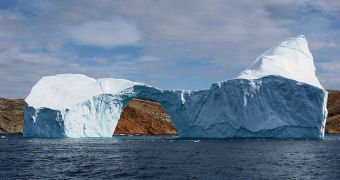A team of researchers from the United Kingdom announces that it has been able to measure the carbon dioxide (CO2) exchange rate taking place between air and water in the open ocean, at higher wind speeds than recorded in any other investigation of this type.
The new dataset is very important for climate science and for models seeking to determine how temperatures on Earth will evolve over the years.
A clearer understanding of the complex series of interactions determining Earth's climate may also be achieved by understanding how critically-important greenhouse gases, such as CO2, are transferred between air and water.
The recent investigation was conducted by a team of scientists based at the UK National Oceanography Center (NOC). The study was funded by the Natural Environment Research Council (NERC) and Oceans 2025.
“Evaluating the factors influencing the transfer of gases such as carbon dioxide between the atmosphere and the ocean is needed for a full understanding of Earth’s climate system,” says NOC researcher John Prytherch.
He conducted the work with Center colleagues Margaret Yelland, Robin Pascal, Bengamin Moat and Meric Srokosz, and in collaboration with expert Ingunn Skjelvan, from the Bergen, Norway-based Bjerknes Center for Climate Research.
The investigation was carried out between September 2006 and December 2009, during the High Wind Air-Sea Exchanges (HiWASE) experiment carried out in the North Atlantic.
The oceanic carbon dioxide fluxes have been little-studied at high wind speeds, and so the team used an autonomous measurement system called “Autoflux” to fill in this gap. The Norwegian weather ship Polarfront was used as a basis for the operations.
In all, the investigators took about 4,000 flux measurements, each of them spanning a period of 20 minutes. At the same time, other sensors looked at water salinity, wind speed, and other variables.
“Our results include measurements made at higher mean wind speeds than previously published for the open ocean,” Prytherch explains. He adds that whitecaps – bubbles which form in breaking water – mediate more gas transfer during high wind speeds.
“Filling this knowledge gap is important because high wind speeds such as those experienced by the North Atlantic are expected to have a large effect on the global air-sea flux of carbon dioxide,” he adds.
“Our results support the hypothesis that bubbles in whitecaps play a significant role in the global exchange of carbon dioxide and other climatically important gases between the oceans and the atmosphere,” the scientist concludes.

 14 DAY TRIAL //
14 DAY TRIAL //